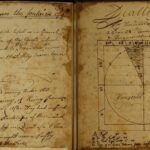The Ising model is a cornerstone of statistical mechanics, offering a simplified yet powerful framework for understanding phase transitions, magnetism, and other critical phenomena in physics and beyond. Whether you are a student venturing into this fascinating field or a researcher seeking a concise reference, having a reliable guide is essential. This article serves as a student’s guide to the Ising model pdf, pointing you towards valuable resources and outlining key concepts.
Understanding the Ising Model: A Foundation for Advanced Physics
The Ising model, at its core, is a mathematical model of ferromagnetism. It consists of a lattice of “spins,” each of which can be in one of two states: +1 (spin up) or -1 (spin down). The spins interact with their neighbors, favoring alignment. This simple interaction rule gives rise to complex collective behavior, including phase transitions where the system spontaneously develops a net magnetization.
Why Study the Ising Model?
- Simplicity: The model is relatively simple to define, making it accessible to students with a basic understanding of statistical mechanics.
- Richness: Despite its simplicity, the Ising model exhibits a rich variety of behaviors, including phase transitions and critical phenomena.
- Applicability: The Ising model has applications in diverse fields, including physics, computer science, and biology.
Alt text: A visual representation of the Ising model, showing spins aligned on a lattice with positive and negative values.
Key Concepts in the Ising Model
To effectively utilize a student’s guide to the Ising model pdf, it’s helpful to familiarize yourself with some core concepts:
- Spins: The fundamental units of the model, representing magnetic moments or other binary variables.
- Lattice: The arrangement of spins, typically a regular grid in one, two, or three dimensions.
- Interaction Energy: The energy associated with the interaction between neighboring spins. This energy is lower when spins are aligned.
- Temperature: A measure of the thermal energy in the system. Higher temperatures tend to randomize the spins, while lower temperatures favor alignment.
- Magnetization: The average spin value across the lattice, indicating the degree of alignment.
- Phase Transition: A sudden change in the system’s behavior as the temperature is varied. In the Ising model, this is typically a transition from a disordered (paramagnetic) state at high temperatures to an ordered (ferromagnetic) state at low temperatures.
- Critical Phenomena: The unusual behavior of the system near the phase transition, characterized by long-range correlations and power-law scaling.
Finding the Right Resources: “A Student’s Guide to the Ising Model PDF”
Several resources can serve as a student’s guide to the Ising model pdf. Here are some recommended approaches:
- Textbooks: Many statistical mechanics textbooks dedicate sections to the Ising model. Look for texts that provide detailed derivations and discussions of the model’s properties.
- Online Lecture Notes: University lecture notes are often available online as PDFs. These can provide a concise and focused introduction to the Ising model. Search for “Ising model lecture notes pdf” to find relevant materials.
- Research Papers: While research papers can be more advanced, they can offer valuable insights into specific aspects of the Ising model. Use search engines like Google Scholar to find papers on topics of interest.
- Dedicated Guides: Books specifically dedicated to the Ising Model such as “A Student’s Guide to the Ising Model” by J.S. Walker, Cambridge University Press provide a comprehensive and accessible introduction. This is a highly recommended resource.
Here are some other excellent textbooks that cover the Ising Model extensively:
- Statistical Physics: Statics, Dynamics and Renormalization by L. Kadanoff, World Scientific.
- Statistical Mechanics of Phase Transitions by J. M. Yeomans, Oxford Science Publications.
Alt text: A graph illustrating a phase transition in the Ising model, showing magnetization as a function of temperature.
Essential Topics Covered in a Comprehensive Guide
A good student’s guide to the Ising model pdf should cover the following topics:
- Definition of the Model: A clear and precise definition of the Ising model, including the lattice structure, spin variables, and interaction energy.
- Mean-Field Theory: An approximate method for solving the Ising model. It provides a qualitative understanding of the phase transition but neglects fluctuations.
- Exact Solutions: Exact solutions are known for the one-dimensional Ising model and the two-dimensional Ising model with no external field. These solutions provide valuable benchmarks for testing approximation methods.
- Monte Carlo Simulations: Numerical methods for simulating the Ising model. Monte Carlo simulations can be used to study the model’s behavior in various dimensions and with different interaction parameters.
- Renormalization Group: A powerful technique for studying critical phenomena. The renormalization group can be used to calculate critical exponents and understand the universality of phase transitions.
- Applications of the Ising Model: Examples of how the Ising model is used in different fields, such as magnetism, neural networks, and social networks.
Conclusion: Your Journey with the Ising Model
The Ising model is a gateway to understanding complex phenomena in physics and beyond. By utilizing a student’s guide to the Ising model pdf and focusing on the key concepts, you can unlock the power of this remarkable model and apply it to a wide range of problems. Whether you’re delving into phase transitions, exploring magnetism, or simulating complex systems, the Ising model provides a valuable foundation for your studies. Good luck on your journey!
